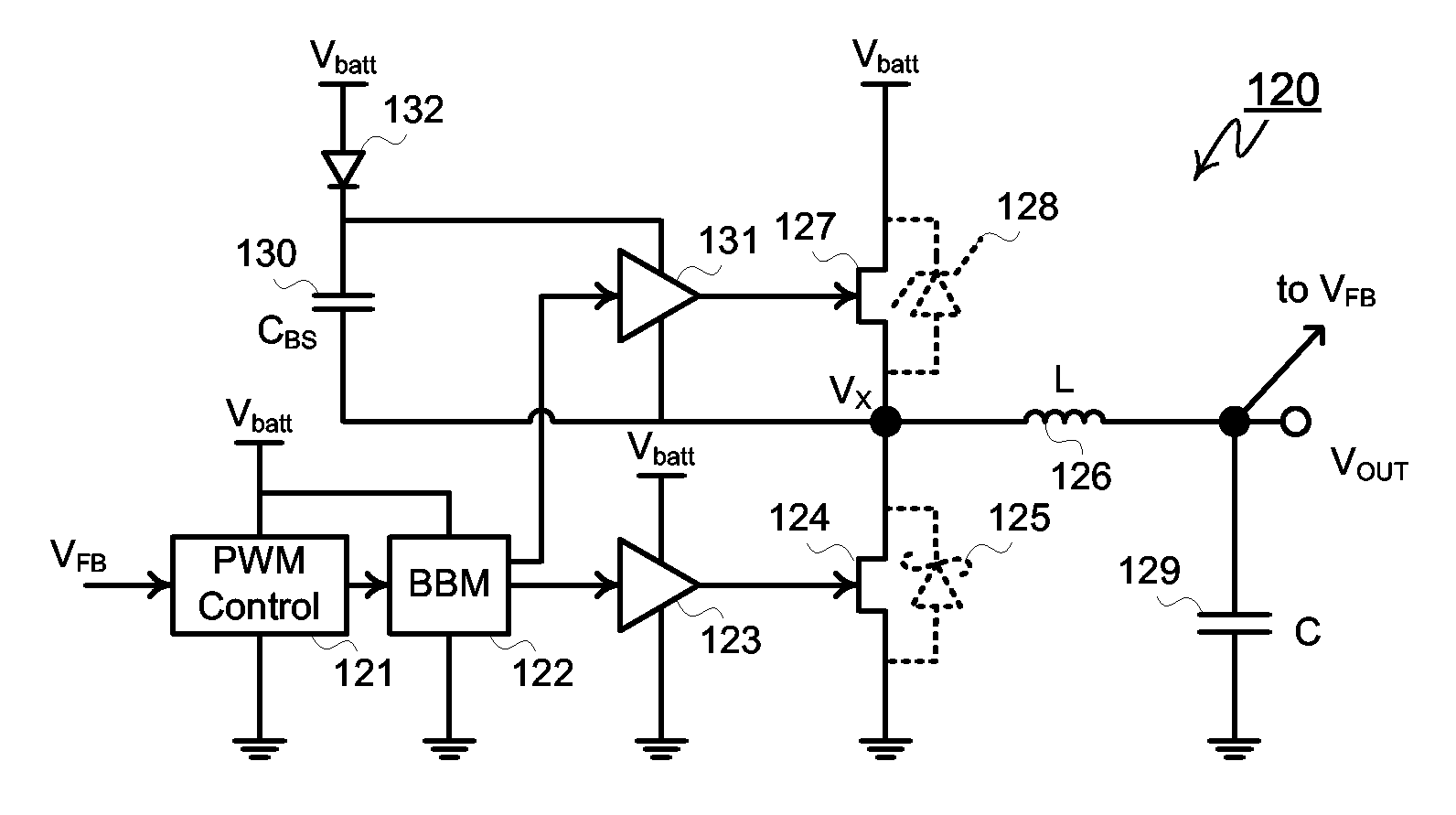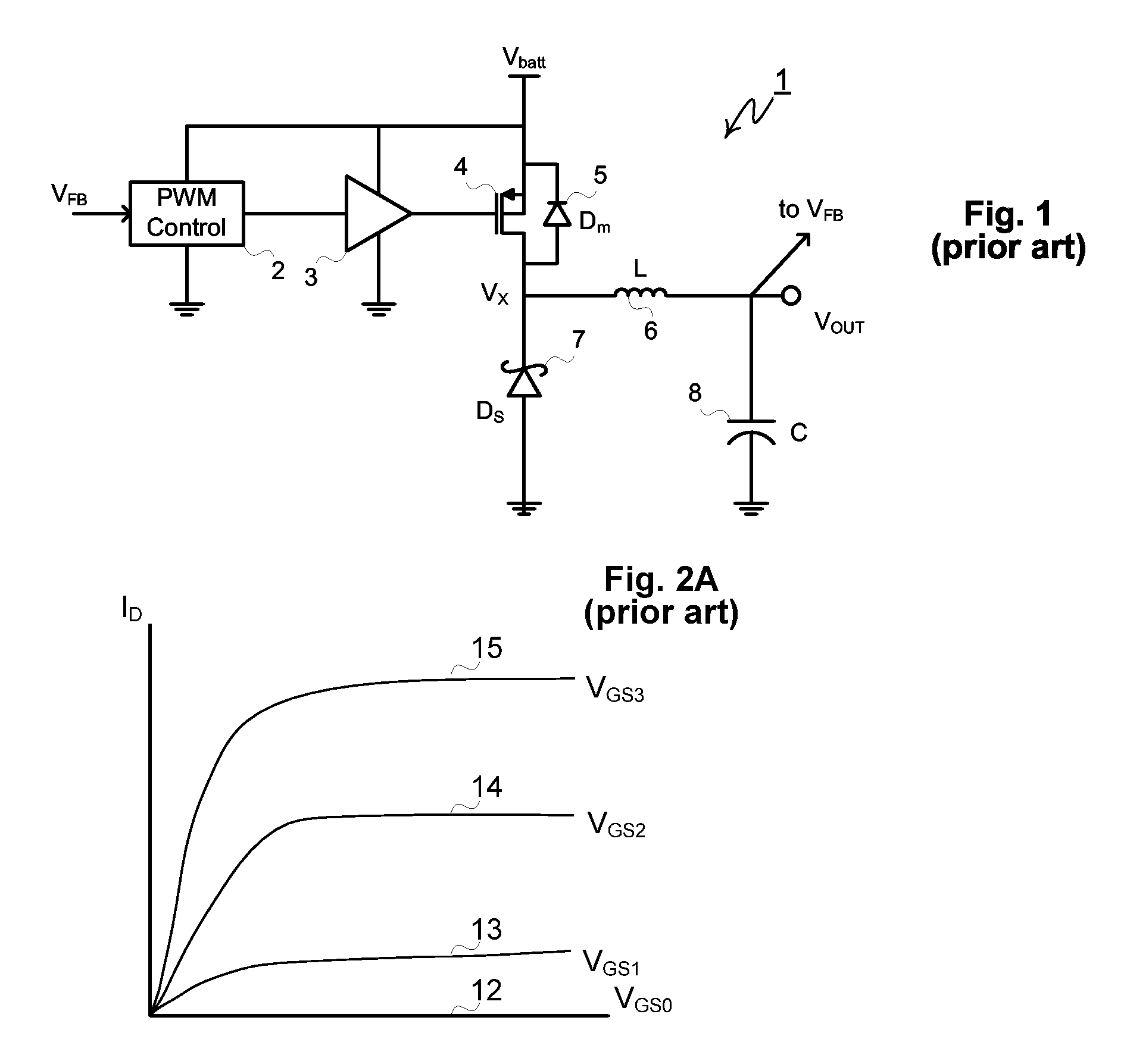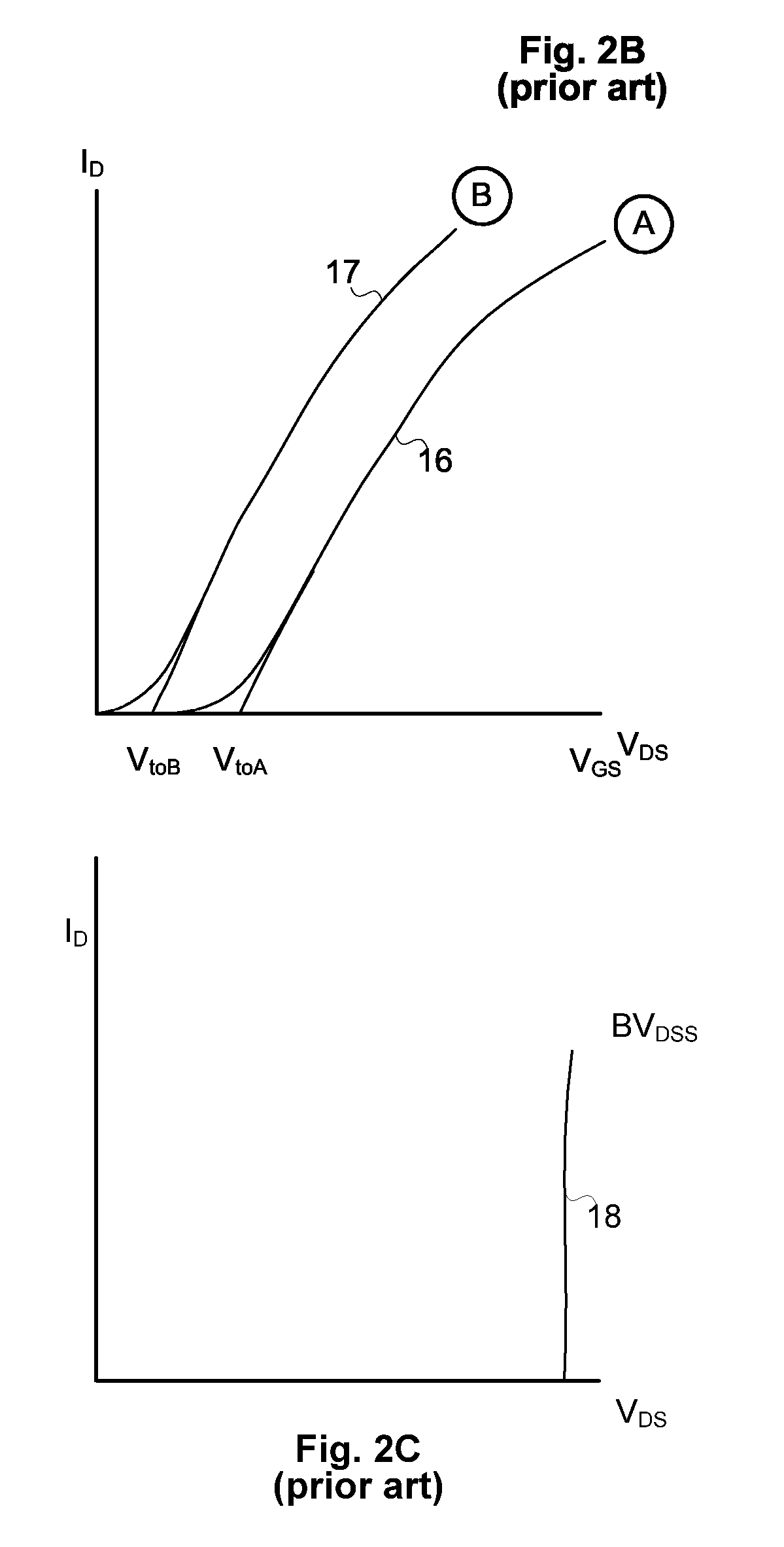During such operation, these power devices lose energy to
self heating, both during periods of on-state conduction and during the act of switching.
These switching and conduction losses adversely limit the power converter's efficiency, potentially create the need for cooling the power devices, and in battery powered applications shorten battery life.
Using today's conventional power transistors as
power switching devices in switching
regulator circuits, an unfavorable tradeoff exists between minimizing conduction losses and minimizing switching losses.
Larger lower resistance transistors exhibit less conduction losses, but manifest higher
capacitance and increased switching losses.
Smaller devices exhibit less switching related losses but have higher resistances and increased conduction losses.
At higher switching frequencies this trade-off becomes increasingly more difficult to manage, especially for today's
power MOSFET devices, where device and converter performance and efficiency must be compromised to achieve higher frequency operation.
Making the MOSFET large enough to exhibit low on-resistance requires a device with large
capacitance which results in excessive switching losses associated with driving its gate at high frequencies.
Using a smaller MOSFET may reduce switching losses but increases 12R
conduction loss.
The tradeoff between gate drive losses and conduction losses becomes more severe at higher frequencies, and becomes prohibitively lossy above a few Megahertz.
Gate drive loss driving a P-channel switch can be substantial, particularly at high frequencies.
Since gate buffer 3 is powered directly from the battery input, variations in the
battery voltage during its
discharge causes constant changes in the on-resistance,
conduction loss,
and gate drive loss contributions associated with driving the MOSFET, making optimization more difficult.
Using an N-channel MOSFET as a high-side, i.e. battery connected, device is problematic since driving the gate of such a device requires a voltage greater than the input voltage of the converter.
This leakage increases with decreasing threshold and increasing temperature, especially for thresholds below 0.6V, making the device unattractive as a normally-off power switch.
In addition to the tradeoff between leakage and on-resistance, a power MOSFET also exhibits a trade-off between its on-resistance and its switching losses.
In devices operating at voltages less than one hundred volts and especially below thirty volts, switching losses are dominated by those losses associated with driving its gate on and off, i.e. charging and discharging its input capacitance.
Overdriving the gate to higher voltages decreases on-resistance but increases gate charge
and gate drive losses.
Inadequate gate drive leads to large increases in on-resistance, especially below or
near threshold voltage.
Minimizing the QGRDS product a
silicon MOSFET is difficult since changes intended to improve gate charge tend to adversely
impact on-resistance.
Historically, its limited use is due to a variety of issues including high cost, low yield, and numerous device issues including
fragility, and its inability to fabricate a MOSFET or any other insulated gate active device.
While cost and yield issues have diminished (somewhat) over the last decade, the device issues persist.
The greatest limitation in device fabrication results from its inability to form a
thermal oxide.
Without any available
dielectric, isolation between GaAs devices is also problematic, and has thwarted many commercial efforts to achieve higher levels of integration prevalent in
silicon devices and
silicon integrated circuits.
Excessive forwarding biasing of the Schottky junction at
high current densities may also permanently damage the device.
Note that the maximum extent of the
depletion region may be unable to pinch-off the
drain current totally, in which case the device cannot be fully turned off.
Such a device, where the minimum drain leakage IDmin is substantially above zero, does not make a useful power switch.
The MOSFET has much lower off-state leakage current and higher off-state resistance than the MESFET but is more costly in
power consumption to switch at high frequencies.
 Login to View More
Login to View More  Login to View More
Login to View More 


